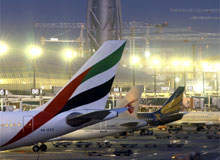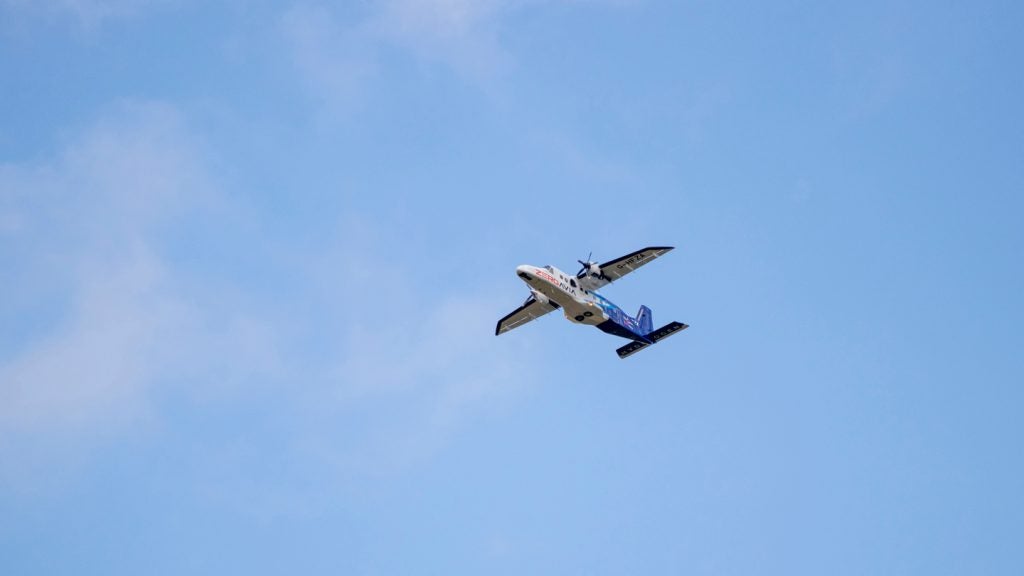
Dubai – and, indeed, the United Arab Emirates (UAE) as a whole – has rapidly emerged as a contender for top global transport hub. In Dubai, quality air and sea ports Dubai International, Port Rashid and Jebel Ali are experiencing a passenger and cargo boom – with similarly expanding facilities in neighbouring emirates Abu Dhabi and Sharjah further stimulating the region’s claim to transport fame.
According to the International Air Transport Association (IATA), passenger-kilometres in the Middle East increased 18.1% in 2006, making the region the fastest growing in global travel.
In Dubai alone, tourist arrivals hit 5.1 million January–September 2007, 7% up on 2006, according to the emirate’s Department of Tourism and Commerce Marketing (DTCM).
Hotel revenues surged 21% to AED9.7bn, with occupancy rates hitting 87% in the same period, in the wake of fierce tourism campaigns abroad – particularly in its top market, the UK, as well as Europe, Asia, Africa and Australia. Saudi Arabia, India and Iran are also important markets.
MASSIVE FOREIGN INVESTMENT
It’s not just about tourism. National US-Arab Chamber of Commerce newsletter Tradeline says, in latest figures, that $12bn in foreign investment flowed into the UAE in 2005 – representing 34% of all foreign direct investment in the region, which is, conveniently, located at a geographical crossroads between Asia, Europe and Africa.
How well do you really know your competitors?
Access the most comprehensive Company Profiles on the market, powered by GlobalData. Save hours of research. Gain competitive edge.

Thank you!
Your download email will arrive shortly
Not ready to buy yet? Download a free sample
We are confident about the unique quality of our Company Profiles. However, we want you to make the most beneficial decision for your business, so we offer a free sample that you can download by submitting the below form
By GlobalData“The country is especially interested in attracting investment that will result in a transfer of knowledge or expertise, open new markets, and create new employment opportunities in knowledge-intensive and high value-added areas of the economy.
“Foreign investors are attracted by the UAE’s liberal tax, investment and residency laws, as well as the country’s 32 free zones,” the chamber said. “The UAE’s strategic location and world-class transportation infrastructure also help to attract foreign investors who see the advantages of using the UAE as a hub.”
Dubai has already cemented a position as leading logistics hub for much of the eastern hemisphere. And it’s booming – reporting a real GDP growth rate of 8.2% for 2005, the most recent year for which figures are available.
Research by analysts at Euromonitor International, Travel and Tourism in the United Arab Emirates: Market Insight, published in 2007, suggests the emirates have worked hard diversifying their economies from oil dependence. “All the emirates are committed to achieving outstanding results in a very short time. The rate of development is already significant, mainly driven by outstanding infrastructure, including skyscrapers and hotels,” it states.
Yet current capacity is barely coping with such growth – further development is needed if the UAE, and Dubai in particular, is to fulfil its more ambitious plans. Considerable investment in transport infrastructure that supports continued growth has already been made, and more is to come.
Dubai and Abu Dhabi especially have poured billions of dirhams into new planes and facilities for Emirates and Etihad, the emirates’ respective carriers – attracting visitors, cargo, and yet more investment in events, leisure and business infrastructure.
According to Euromonitor, about 25 million passengers passed through Dubai International Airport (DXB) in 2006, and 65 million are tipped by 2010. Eight million tourists stayed in Dubai for at least one night in 2006, and ten million a year are predicted to do so by 2011. As a result, Dubai has launched construction of what is planned as the largest airport in the world as part of the Dubai World Central project.
WORLD’S LARGEST AVIATION HUB
“With Dubai [International] Airport being expanded to accommodate 75 million passengers a year, Dubai is set to become the largest airport hub in the world,” wrote Euromonitor.
What’s more, carrier Emirates sat down in July with Etihad to work out ways of increasing efficiencies and boosting the UAE advantage even further, by sharing equipment and technology services as both continue to expand their aircraft fleets.
Emirates, the eighth-largest international air passenger carrier in 2005, is expected to double its plane numbers soon to more than 200 – including Airbus A380s.
Emirates SkyCargo has developed an automated central cargo reservation and business management application, SkyChain, that is expected to boost its ability to handle cargo accurately and rapidly and communicate with service providers.
Ali Zaigham, a senior communications officer for Dubai Airports, a newly formed umbrella company overseeing both international airports, says the addition of Dubai World Central (Al Maktoum) International Airport (JXB) at Jebel Ali, 40km from the current Dubai International Airport, is happening over the next several years.
“It will be the world’s largest airport with an ultimate capacity to handle 120 million passengers annually and 12 million tonnes of cargo a year. The $10bn airport is at the heart of Dubai World Central, a 140km² aviation and logistics project with infrastructure costs in the vicinity of $33bn,” Zaigham said.
Dubai World Central airport will have perhaps 16 cargo terminals handling up to 12 million tonnes of cargo annually. The first of its six parallel 4.5km runways was finished late last year. Up to four aircraft will be able to land simultaneously, 24 hours a day, minimising in-air queuing.
Three passenger terminals are planned, one reserved for Emirates and one for low-cost carriers, and will be supported by hotels, shops and 100,000 parking spaces. It’s also slated to be the region’s only hub for A, B and C-level checks on all aircraft, including A380s.
Activities at Dubai World Central city – expected to be home to 250,000 people – will be supported by what is billed as the world’s first truly integrated logistics platform, connecting all transport modes, logistics and value-added services, including manufacturing and assembly. It combines with the airport, Jebel Ali port and the Jebel Ali Free Zone into one customs-bonded area for cargo convenience.
A380 FACILITIES
Meanwhile, major expansion is nearing completion at Dubai International, which will become the hub for Emirates. The project will add a third terminal and two air-side facilities – one of which will be A380-specific. By mid-2008, the 300m x 350m terminal three and one air-side facility will be operational, while the special A380 facility should be ready in 2009, Zaigham says.
“The new terminal and facilities will expand Dubai International’s capacity from 25 million passengers per annum today to almost 75 million,” he said.
A cargo ‘mega terminal’, additional to the cargo village and capable of handling three million tonnes of freight, is due for completion by 2018.
Already, Airline Operations Data Services (AODS) streamline and simplify intra-airline, ground handler and Department of Civil Aviation communications, via an online self-service platform to which airlines submit and process flight operations-related requests to airport authorities. Request progress can be checked and updated, with notification and confirmation received via SMS, email and the like.
An E-WAP service is also slated to start. Also, wireless infrastructure tools and services are provided through the radio services division to different types of customers. Ten more e-gates – making for a total of 16 – for quicker arrivals and departures were installed at terminal one in May 2007 – and the number may be doubled in the near future.
A total AED300bn ($82bn) is being invested in numerous civil aviation and aerospace industry projects in Dubai, according to Dubai Airports.
DUBAI LEADS UAE GROWTH
Zaigham says Dubai handled 28.8 million passengers in 2006 while in 2007 the figure is expected to have crossed 33 million. Expanded operational capacity coming into play later this year in the form of the new terminal will further accelerate the rate of growth from the average 15%–18%, since 2002, to achieve the projected figure in 2010. Outside Dubai and Abu Dhabi, Al Ain, Sharjah, Fujairah, and Ra’s Al Khaimah all have their own international airports, with Ajman planning to build
its own soon.
“After completion of terminal three and two new airside facilities, there will be no physical space available for further expansion [of Dubai International Airport],” Zaigham said.
He said both airports will be linked via rapid metro – using the proposed Purple Line of Dubai Metro, and also possibly the Red Line – and a dedicated road corridor. “Passengers will be able to complete check-in formalities for their flights on up to three of the major metro stations on the Purple Line. The two airports will complement each other, catering to different categories of passengers and carriers,” he said.
Zaigham at the time of writing couldn’t confirm the extent of sharing of information technology and resources between the airports, such as computer systems, software and services. However, it can be assumed that the computer support will prove as advanced as the rest of Dubai World Central.







